 | ||
Similar Ube halaya, Gulaman, Suman, Ginataan, Bibingka | ||
Buko pie
Buko pie is a traditional Filipino baked young-coconut (malauhog) custard pie. It is considered a specialty in the city of Los Baños, Laguna located on the island of Luzon.
Contents
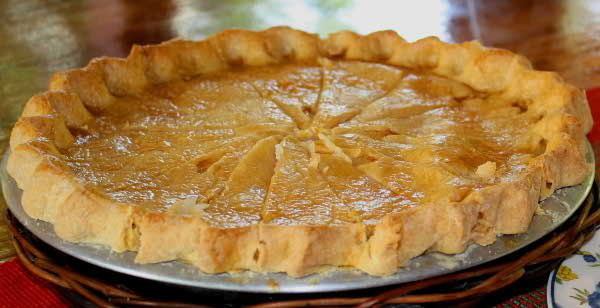
Popular with Filipinos, it resembles a coconut cream pie, except that it is made with young coconuts (buko in Tagalog) and has neither cream in the coconut custard filling or meringue swirls on top of the baked coconut custard. Instead, the pie uses sweetened condensed milk, making it denser and healthier. The pie is made with buko meat. There are also variations of the pie, which are similar but use slightly different ingredients, such as macapuno pie, that uses a special type of coconut which differs from ordinary coconut as it is thick and sticky. The pie was originally a delicacy only available in the Philippines, but blast freezing technology has allowed buko pie-makers the ability to export. As it has become easier to transport and more accessible around the world, people are able to buy it as a pasalubong or homecoming present after having visited the Philippines. Buko pie is traditionally plain, nowadays flavorings such as pandan, vanilla, or almond essences are used. Buko pie is similar to the Dutch-Indonesian klappertaart and the South African klappertert. Klappertaart differs from the Filipino buko pie as it is a baked creamy coconut custard without the crust, and contains raisins and nuts. Klappertert is most akin to the Filipino buko pie as it also has a crust, but differs in that it also adds apricot jam and a dash of cinnamon to the coconut custard.
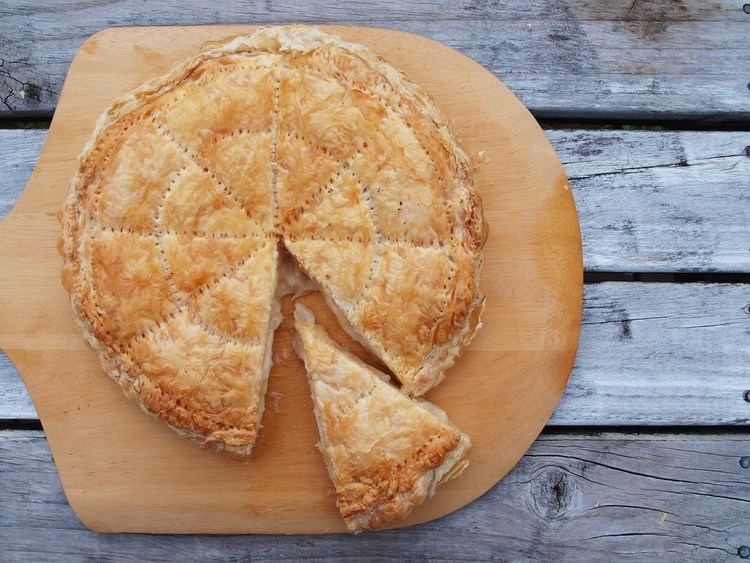
Buko pie
Origin
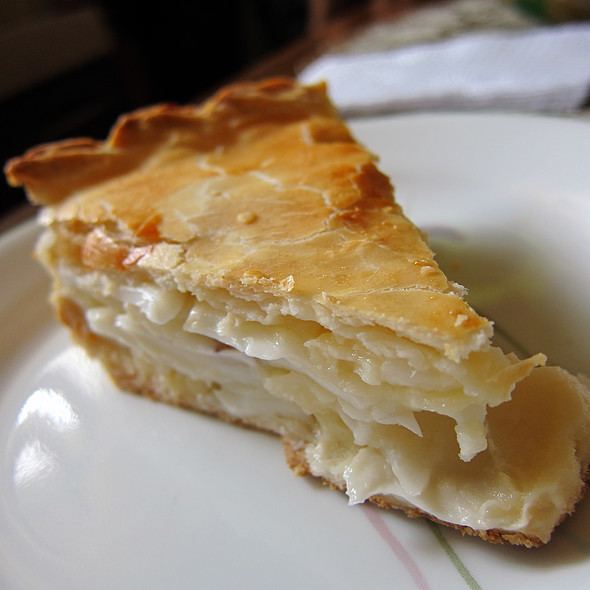
The idea of the buko pie is said to have originated from the province of Laguna in the Philippines. The creators of this Filipino pastry were the Pahud sisters who were locals of the city of Los Baños, Laguna. Soledad Pahud returned to her family in the Philippines after she worked as a maid in the United States. While she was working abroad, she learned to make apple pies. In the process of starting up a bakeshop business, Pahud tried to recreate the American dessert with the help of her sisters. As apples were not native to the Philippines, Pahud along with her family improvised and replaced the ingredient with "buko" or young coconuts. Using "buko" as the ingredient for the pie filling was recommended by one of the sisters named Apolonia because of the resource's abundance locally. The Pahud sisters' bakeshop business grew into what is now Orient Buko Pie Bakeshop, their own bakery specializing in buko pies. The sisters also created their own variations of the buko pie which include apple buko pie, pineapple pie, and tropical pie.
Nutrition
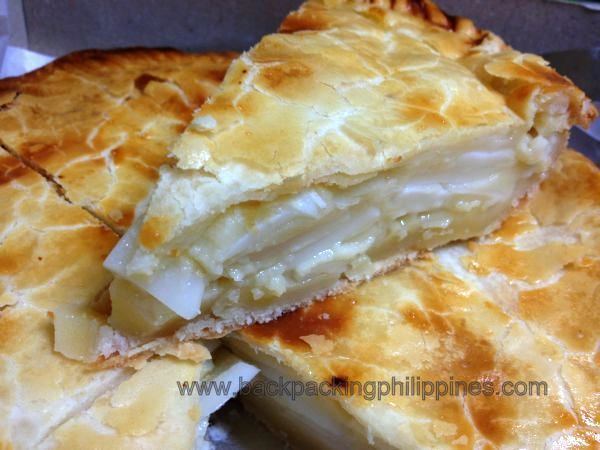
Buko pie is very high in calories and rich in fat, carbohydrates and proteins according to its nutritional value. It is a source of calcium, iron, niacin and folate. As a result of the use of white sugar and condensed milk in the pastry, excess calories are found.
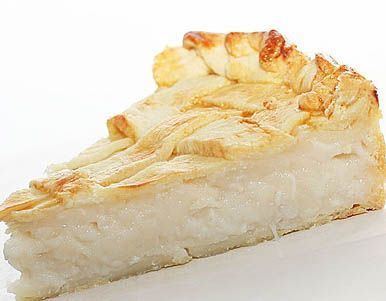
While the pastry contains 66.9g of carbohydrates, the level of simple carbohydrates within a buko pie is higher than the level of complex carbohydrates. The dish serves as a source of a healthy yield of iron. Buko pie also contains a high amount of sugar and magnesium, and an average amount of sodium.
Ingredients
A buko pie recipe generally contains the following ingredients:
Crust

Filling
Method of preparation
When making buko pie a double baking method is followed. The pie crust and the pie filling need to be prepared separately before combining the two together. First the pie crust is made by mixing flour, salt and sugar in a bowl. Afterwards, the mixture is made into dough by adding and mixing in ice water and egg yolks. The dough mixture is then refrigerated and thinly rolled out by using a rolling pin. To finish the crust component of the buko pie, the dough is baked and set aside to cool. Next, the pie filling is prepared. The pie filling ingredients listed above are mixed and cooked on low heat. Once the pie crust and the pie filling are finished, they are combined together by pouring the filling into the pie crust. A second crust is used to cover the filling and seal the pie from all sides. It is then baked a second time until the crust is lightly browned.
